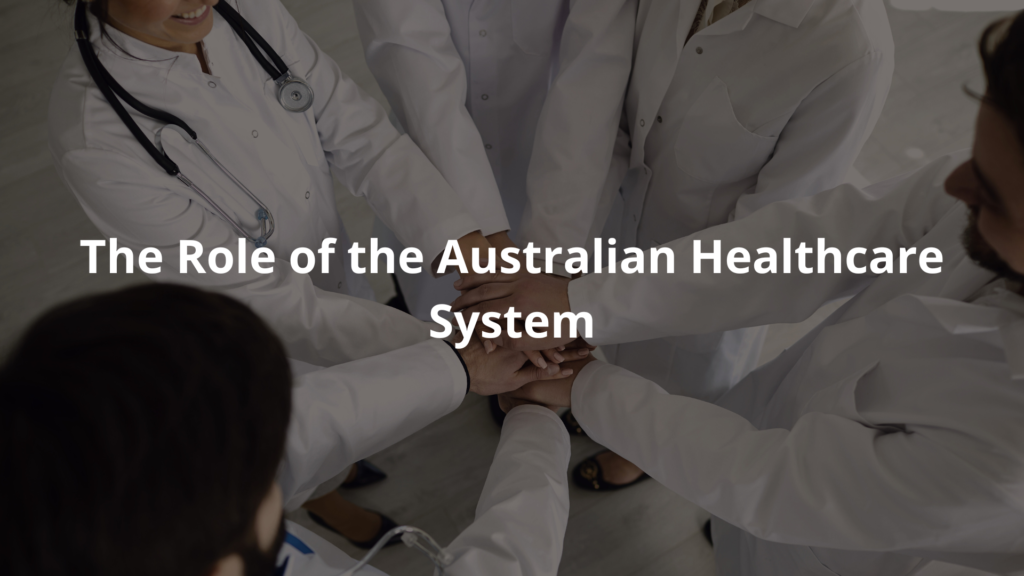Learn about Doppler safety, fetal monitoring, and how to ensure a healthy pregnancy for you and your baby.
Home fetal Doppler devices: They can be a source of comfort for expectant parents or a source of anxiety if not used correctly. These devices use ultrasound technology (sound waves, essentially) to detect the baby’s heartbeat. But using them safely is paramount for the well-being of the foetus.
One thing to keep in mind: overuse isn’t ideal. Experts suggest limited use; perhaps only as directed by a doctor. Too much exposure to ultrasound, even at low levels, might pose unforeseen risks. For example, if you’re not sure what you’re hearing (is it the baby, or your own heartbeat?) it could cause unnecessary stress. The whooshing sound is often reassuring.
Knowing how to use the Doppler and what to expect, is essential. Read the manual. Proper technique matters. The risks are minimal with correct usage, but knowledge is power.
Keep reading to understand the ins and outs of Doppler safety.
Key Takeaway
- Home fetal dopplers can help monitor your baby’s heart rate, but they need to be used wisely.
- Always talk to a healthcare professional about any concerns during pregnancy.
- Understanding potential risks is key for safe pregnancy monitoring.
Understanding Home Fetal Dopplers
A home fetal doppler, a pocket-sized echo of life, it’s easy to see the appeal. To hear that thump-thump-thump, that tiny drumbeat from within. These devices, kinda like a miniature ultrasound, let parents eavesdrop on their baby’s heartbeat from the comfort of their living room. The Therapeutic Goods Administration (TGA) gives ’em the okay in Australia, but what does that really mean?
It’s tempting to think that a strong heartbeat equals a healthy baby, and that’s where the danger lies. False reassurance, they call it. Hearing that comforting sound, or not hearing it, isn’t a substitute for a proper check-up with a qualified midwife or doctor. See, a baby’s position can change (they’re acrobats in there!), and the doppler might struggle to pick up the signal. This can cause unnecessary stress.
There’s a certain peace of mind folks seek; however, it is important to consider a couple of things.
- False Reassurance: A heartbeat doesn’t guarantee everything’s perfect.
- Anxiety: Not finding the heartbeat can cause unnecessary worry.
- Medical Advice: Dopplers aren’t a replacement for professional care.
So, enjoy the sound, sure; but use it as a supplement, not a substitute. And, always, always consult with a healthcare professional for real, informed medical advice. If you are using a home fetal doppler, it is important to follow instructions so that you are getting factual measurements, which means understanding fetal heart rates, the use of a doppler, and peace of mind are separate entities.
Risks and Benefits of Fetal Monitoring
Fetal monitoring, a high-tech lullaby in a way. The idea is simple, keeping tabs on the little one growing inside. Doppler ultrasound is a common method (uses sound waves). But just like sunshine, too much can be a bad thing. There are benefits; no denying that. Hearing that tiny heartbeat, that can create a real bond. A connection between parent and child. Peace of mind too, knowing (or thinking you know) everything is alright.
There are potential downsides. Over-reliance can be a problem. Thinking that a quick listen is the same as a proper check-up. Exposure to sound waves is the biggest concern. The Australian Society for Ultrasound in Medicine (ASUM) has guidelines, recommendations, basically. They suggest keeping the thermal index (TI) below 1.0 (a measure of heat generated by the ultrasound). You should minimise the risks of excessive exposure. [1]
Consider these potential drawbacks
- Over-Reliance: Don’t replace professional care with home monitoring.
- Sound Wave Exposure: Limit use to minimise potential harm.
- False Security: Hearing a heartbeat doesn’t guarantee a healthy baby.
If parents use home fetal dopplers, it is important to consider professional medical advice. Use common sense; just because something is available doesn’t mean it’s always the best choice. ASUM provides guidance, for the risks of dopplers, and recommends thermal indexes.
What to Do If You’re Concerned
Credits: IntermountainParents
That little voice in your head, that gut feeling, mums and dads, trust it. If something feels off during pregnancy, if the baby’s movements have slowed, or if you just have a nagging worry, listen. Medical attention; don’t delay. Folks often wait, thinking they’re overreacting. But early presentation, getting checked out sooner rather than later, can be a game changer.
Stillbirth, a terrifying word no parent wants to contemplate. It’s a reality, sadly. But prompt action can sometimes prevent it. The Royal Australian and New Zealand College of Obstetricians and Gynaecologists (RANZCOG) knows a thing or two about babies. They strongly recommend regular antenatal appointments (check-ups before birth). Keeping track of bub’s health, that’s the key.
A little food for thought.
- Trust Your Instincts: Your body knows best.
- Early Presentation: Don’t delay seeking medical attention.
- Regular Check-ups: Follow RANZCOG’s recommendations.
Mums and dads, listen to your bodies, trust your instincts, and get proper medical advice. It’s a good idea to know your body well. RANZCOG provides recommendations, for antenatal appointments, which keep track of your babies health. [2]
The Importance of Professional Guidance
Home fetal dopplers, they’re not toys, right? They’re medical devices; treat ’em with respect. Supervision from a healthcare professional, that’s vital. There is a need to emphasize that a doctor or midwife can show you the ropes, teach you how to use the doppler correctly. What to listen for. A trained ear can distinguish between a healthy heartbeat and something that might be amiss.
Understanding the fetal heart rate, those numbers mean something. Your doctor or midwife can explain it all. Baby movement apps, they’re popping up everywhere. Tracking kicks and jabs. A modern marvel, perhaps; but don’t rely on them solely. They’re not a substitute for professional advice.
A few things to remember.
- Professional Guidance: Learn from a doctor or midwife.
- Understanding Heart Rate: Know what the numbers mean.
- Apps are Supplementary: Don’t replace professional advice with apps.
Supervision, understanding, caution. These are the watch words. Healthcare professionals can do an excellent job and provide real value. Home fetal dopplers offer insight, however, that insight comes from following the advice of doctors, to understand the heart rate.
Safety Guidelines for Home Fetal Dopplers
Safety guidelines, rules to live by, especially when it comes to those tiny humans growing inside. Home fetal dopplers, they’re handy, sure, but safety first. First things first, check for TGA approval. The Therapeutic Goods Administration, the folks who give the thumbs up (or down) in Australia. Make sure your device has their okay. It’s not a guarantee of perfection, mind you, but it’s a good start.
Instructions, read ’em. Follow ’em carefully. Overuse, that’s a no-no. Limit your use, don’t reach for the doppler every day. Regular check-ups with a healthcare professional, those are way more important.
Some guidelines.
- TGA Approval: Look for the tick of approval.
- Follow Instructions: Read the manual carefully.
- Limit Use: Don’t overdo it.
Consider the potential harm you may be causing to your baby. Follow the guidelines, use common sense, and consult the experts. The Therapeutic Goods Administration provides approval, so people use safe devices, and avoid unsafe levels of doppler usage.
The Role of the Australian Healthcare System

Australia, the land of sunshine and sensible healthcare policies. When it comes to pregnant women and their bubs, there are systems in place. The Maternal and Perinatal Quality Council, they’re like the watchdogs of maternal health. Keeping track of important information, things like perinatal mortality rates (the number of babies who die around the time of birth). They strive for safe and healthy outcomes.
If you’ve got questions, concerns swirling in your mind, there are resources available. Queensland Health guidelines, a good place to start. Other organisations, health professionals are available too. They can provide advice, reassurance, and information. They make it so you can make informed decisions.
A few helpful points.
- Maternal and Perinatal Quality Council: They monitor maternal health.
- Queensland Health Guidelines: Consult these for information.
- Health Organisations: Seek advice from trusted sources.
Pregnant women and babies deserve all the protection we can provide. If you have concerns, reach out, ask questions, and tap into the resources available. The Maternal and Perinatal Quality Council strives to make sure mothers are healthy, that the maternal health is prioritised, and babies are safe.
FAQ
Are home fetal dopplers safe to use without healthcare professional supervision?
Home fetal dopplers aren’t recommended without proper guidance. These devices can give false reassurance about your baby’s wellbeing. Many parents might mistake their own heartbeat (maternal heartbeat) for the baby’s. The Therapeutic Goods Administration (TGA) warns these devices might delay you seeking medical attention when needed.
Instead, learn about normal baby movements and call your doctor with pregnancy concerns. Regular antenatal care includes proper fetal heart rate checks at the right pregnancy milestones.
What should I know about decreased fetal movements and when to seek medical assessment?
If you notice your baby moving less (decreased fetal movements), get immediate medical assessment—don’t rely on home devices. Changes in baby movement can be warning signs that need checking. The Safer Baby Bundle program teaches that knowing your baby’s normal movements helps prevent stillbirth.
Queensland Health says pregnant women should never wait to report concerns. Getting help early can make a big difference. Remember that doctors and midwives are trained in proper fetal movement monitoring as part of good antenatal care.
How does the Australian Register of Therapeutic Goods (ARTG) regulate pregnancy monitoring devices?
The Australian Register of Therapeutic Goods (ARTG) watches over medical devices including fetal monitors. But many products you can buy online might not meet proper standards. The TGA checks devices after they’re sold and handles problems through the Medical Device Incident Reporting Investigation Scheme (IRIS).
Your safety depends on proper rules, but devices you can buy without a prescription often don’t get checked closely. Always see if a pregnancy monitoring device is properly registered, and remember that even registered devices aren’t always safe for untrained users.
Why do healthcare providers warn against using baby movement apps and home monitors?
Doctors warn against relying on baby movement apps and home fetal dopplers because they can make you feel safe when you shouldn’t. The Royal Australian and New Zealand College of Obstetrics and Gynaecology says these tools might stop you from getting proper medical attention for possible pregnancy complications.
Medical guidelines say that checking your baby properly needs professional training. These consumer tools can’t pick up small signs of fetal distress. Instead, follow NHS guidelines that suggest paying attention to your baby’s normal movement patterns.
What research has the Centre of Research Excellence in Stillbirth found about home monitoring?
The Centre of Research Excellence in Stillbirth found that home monitoring devices don’t help prevent perinatal mortality risk. Their research shows that relying on these devices can sometimes increase risk by delaying proper obstetric care. Their position statements encourage informed decision-making about the potential risks of home monitoring.
They support the Australian healthcare system’s approach of regular antenatal appointments with qualified doctors and midwives. Their evidence shows that understanding pregnancy risk factors and keeping regular appointments with midwifery practices works better than home monitoring technology.
How should second-hand devices be handled according to patient safety notifications?
Second-hand devices are risky according to patient safety notifications. The Maternal and Perinatal Quality Council advises against using second-hand fetal doppler devices as they might not work properly. Clinical incidents have happened with faulty used equipment.
If you’re doing a fetal doppler cancellation, throw devices away properly instead of selling them. Health professional guidance strongly discourages passing along used monitoring equipment. Instead, the Australian healthcare system encourages pregnant women to use professional antenatal screening services.
Conclusion
Doppler safety, using home fetal dopplers wisely, and understanding what they can’t tell you. Seeking advice from your doctor or midwife, especially when things don’t feel right. Mums and dads play a big part in bub’s health; being informed helps you make good choices. Keep those antenatal appointments, listen to your body, and enjoy the journey.
A partnership between technology, professional care, and your own instincts? That’s the safest bet. A healthy baby is born out of knowledge, which helps follow professional advice, and safe doppler usage.
References
- https://pmc.ncbi.nlm.nih.gov/articles/PMC8409548/
- https://www.skg.com.au/about-us/practice-profile/safety-you/




